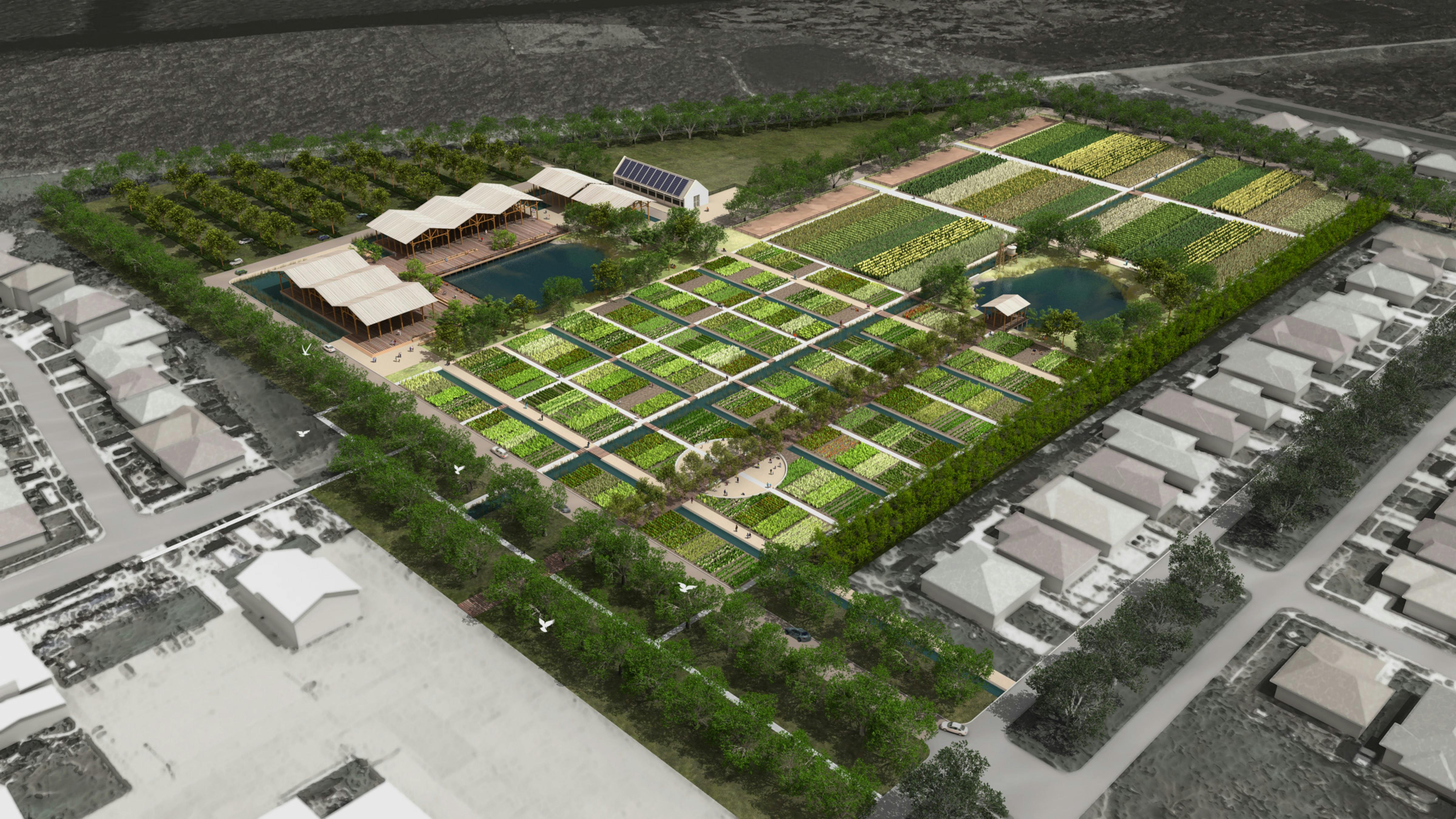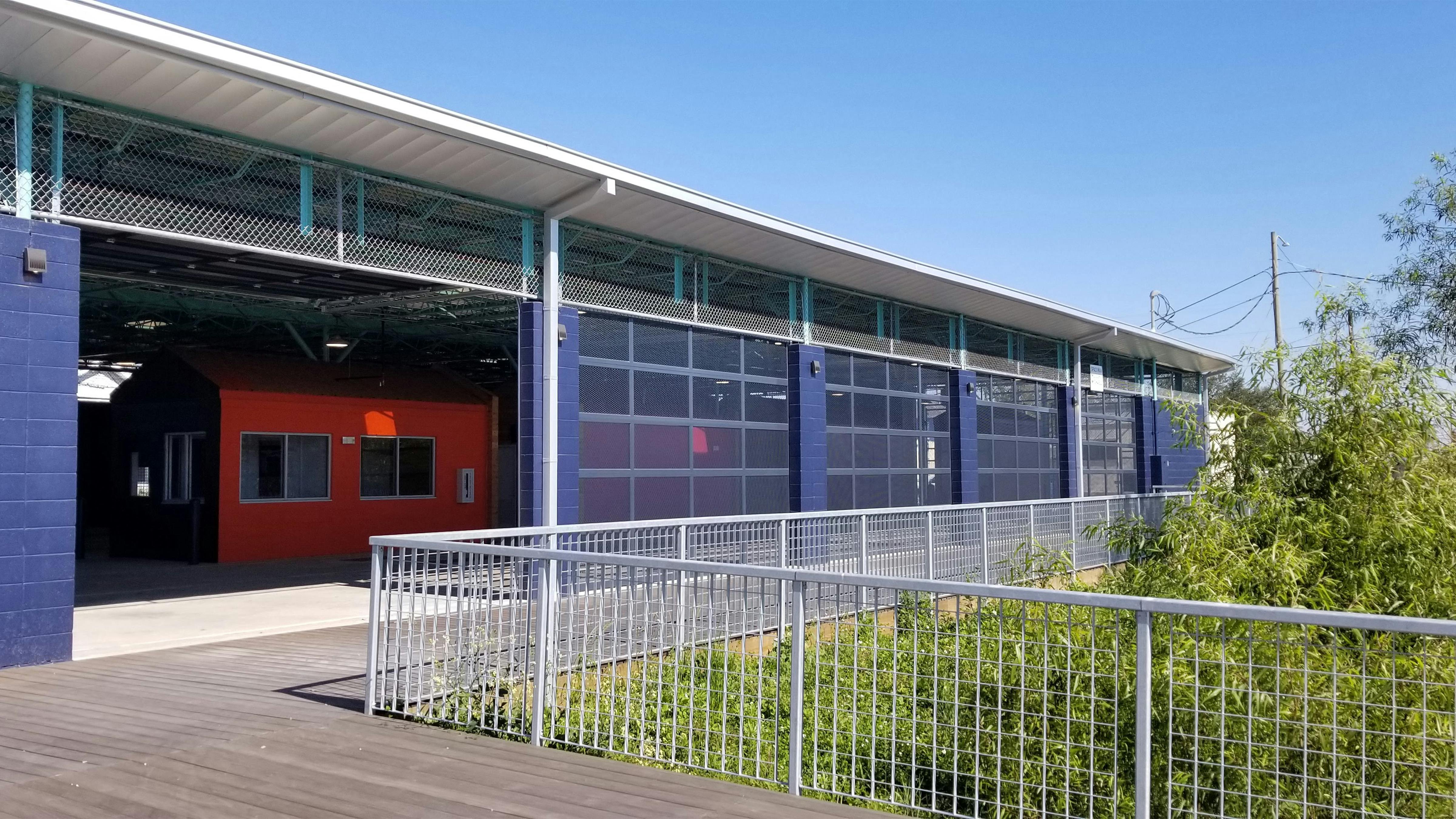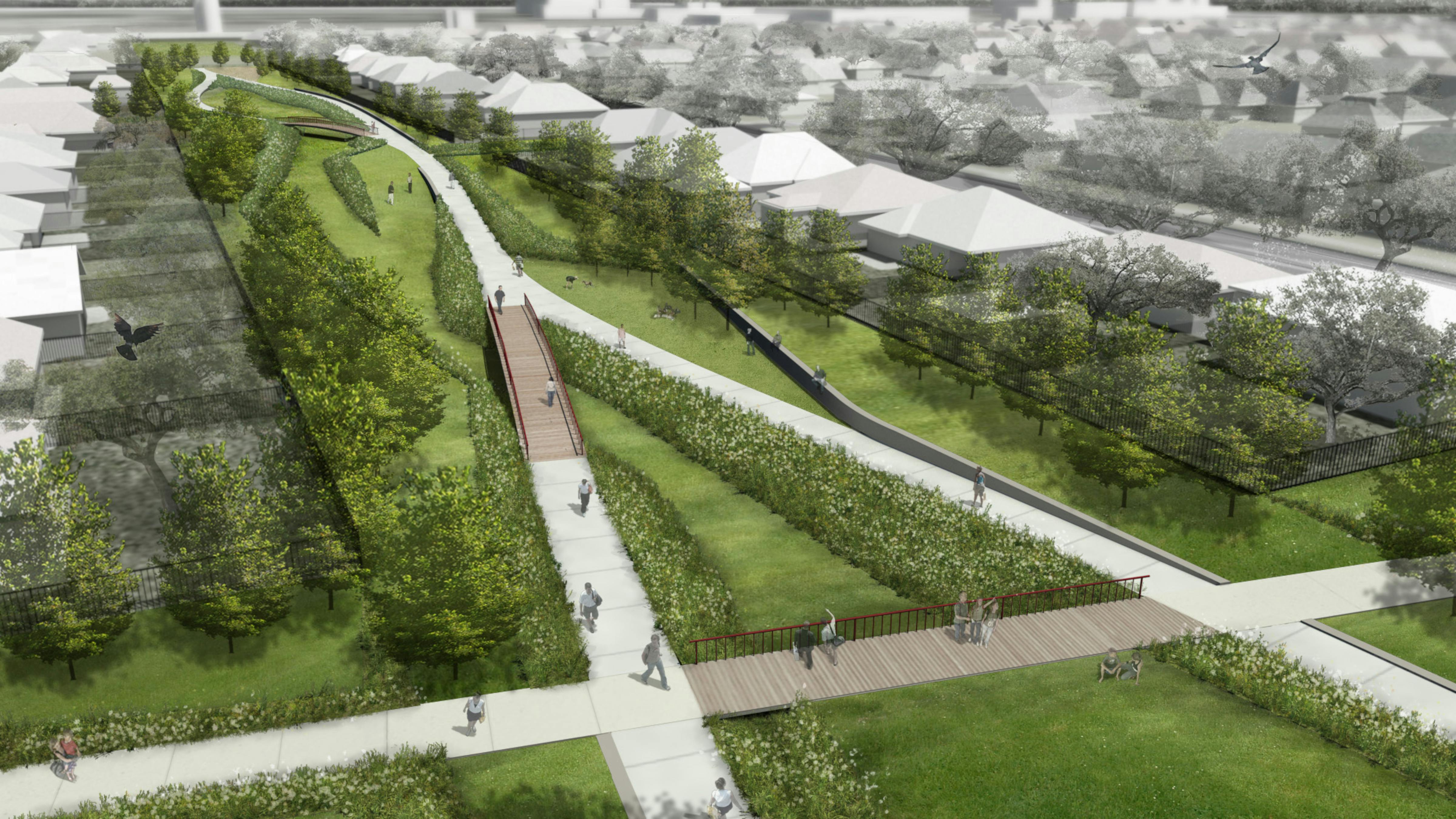Tulane Native Gardens
Tulane University
New Orleans, Louisiana
2021
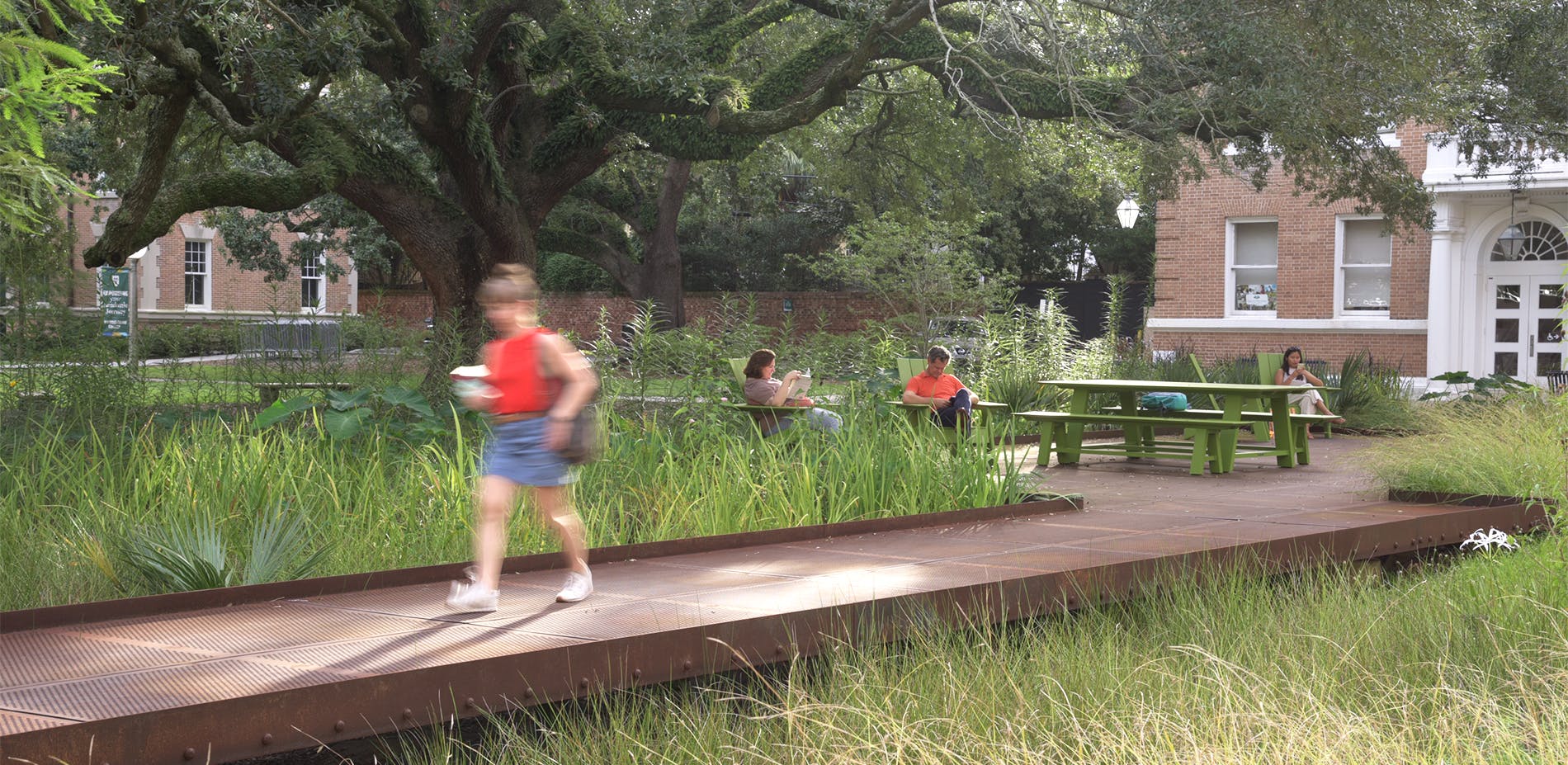
The gardens demonstrate the aesthetic potential to make the landscapes on campus more ecologically rich while still maintaining functionality for students, faculty, and staff.


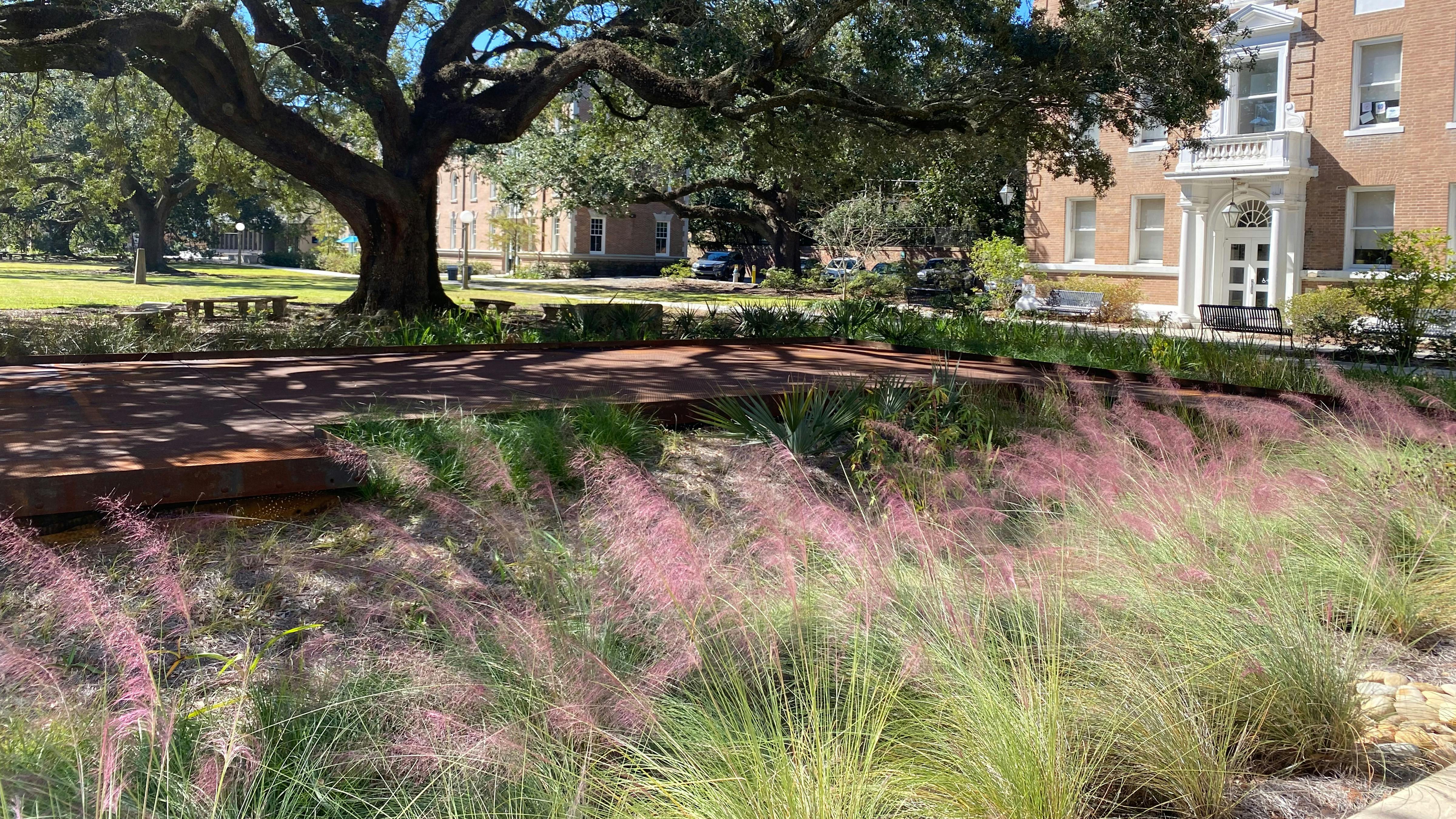
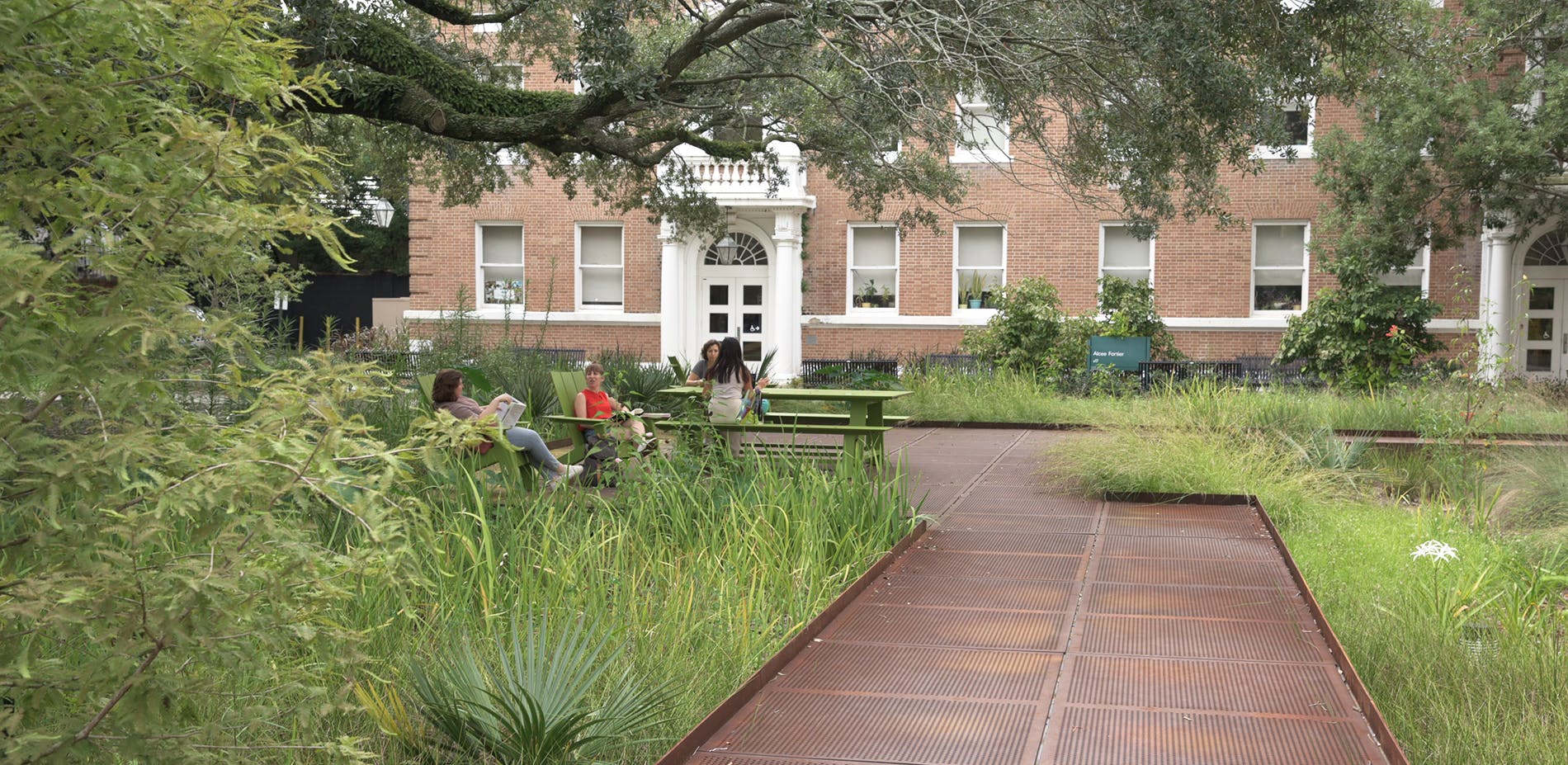
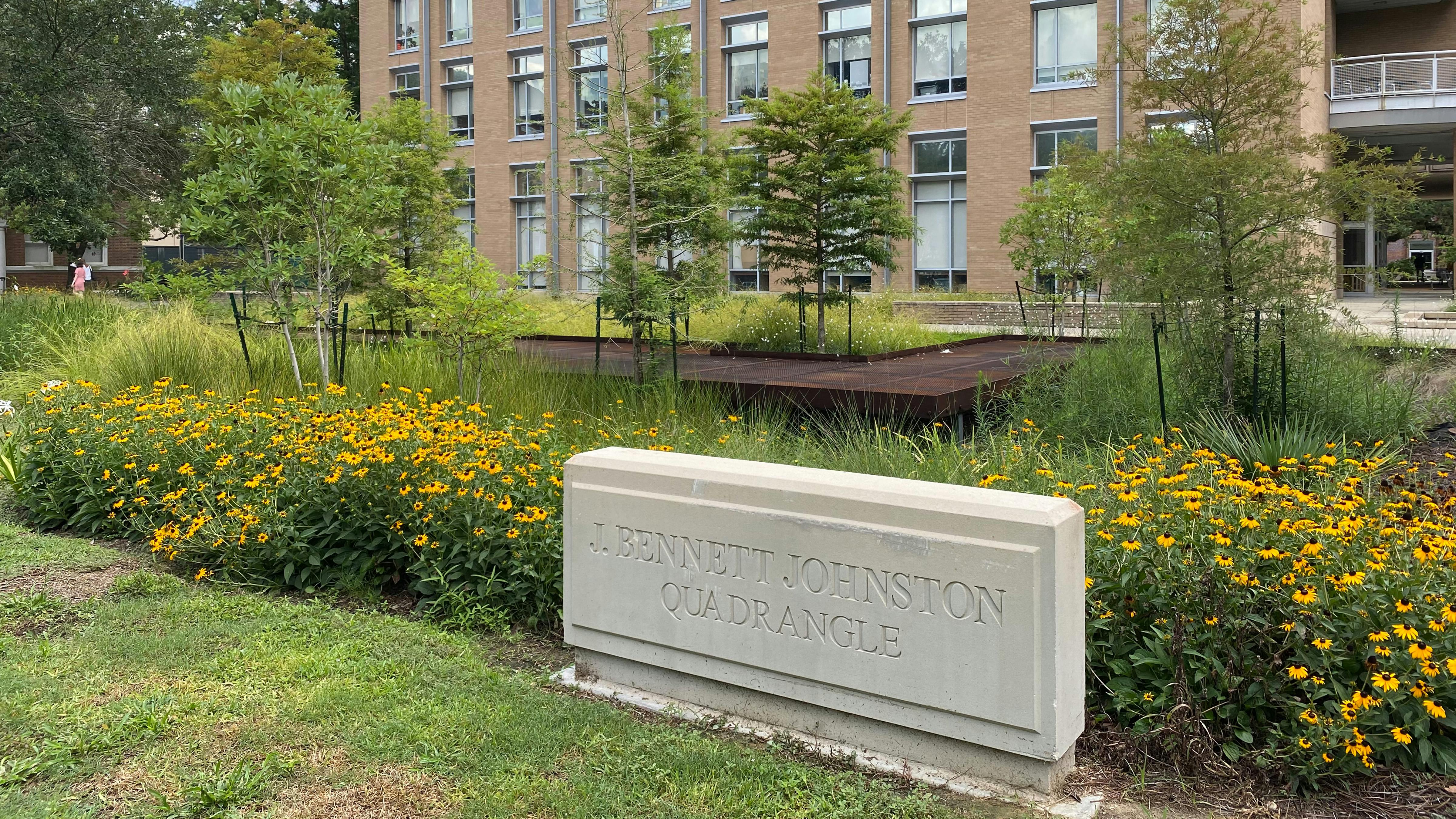
Awards
2022 ASLA Louisiana Merit Award for General Design: Built Work
The Tulane University Native Gardens sits at the heart of the scientific community at Tulane University as a showcase of stormwater management, the use of native plants to create habitat, and a reflective space for students, faculty, and staff. The project was developed during the Tulane 5-Year Stormwater Master Planning process that identified several strategic projects that would address stormwater management campus-wide.
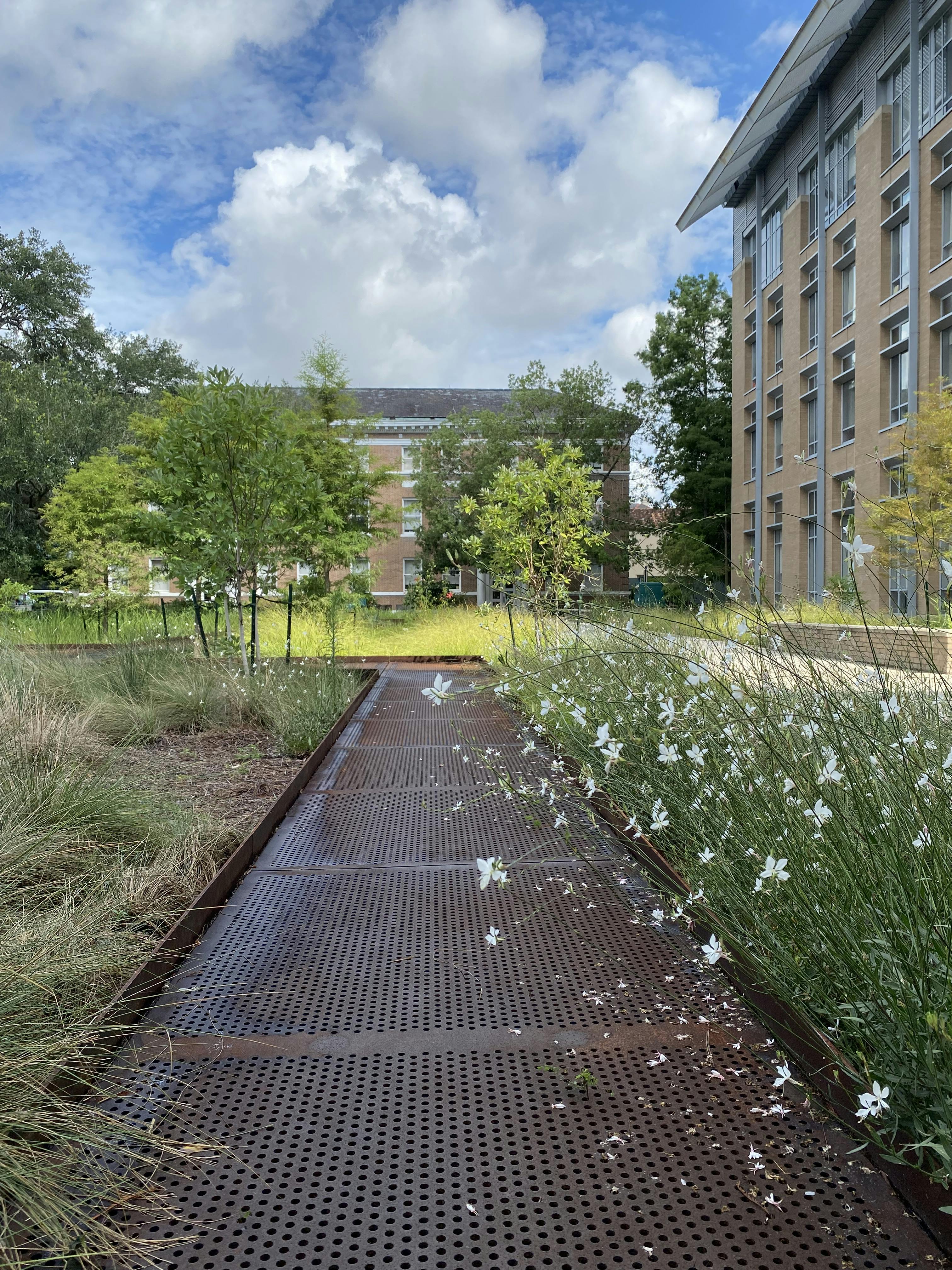
Gaura ‘Whirling Butterflies’ is seen here in bloom along the weathering steel deck. The project highlights a dynamic approach where plantings are allowed to change seasonally and from year to year.
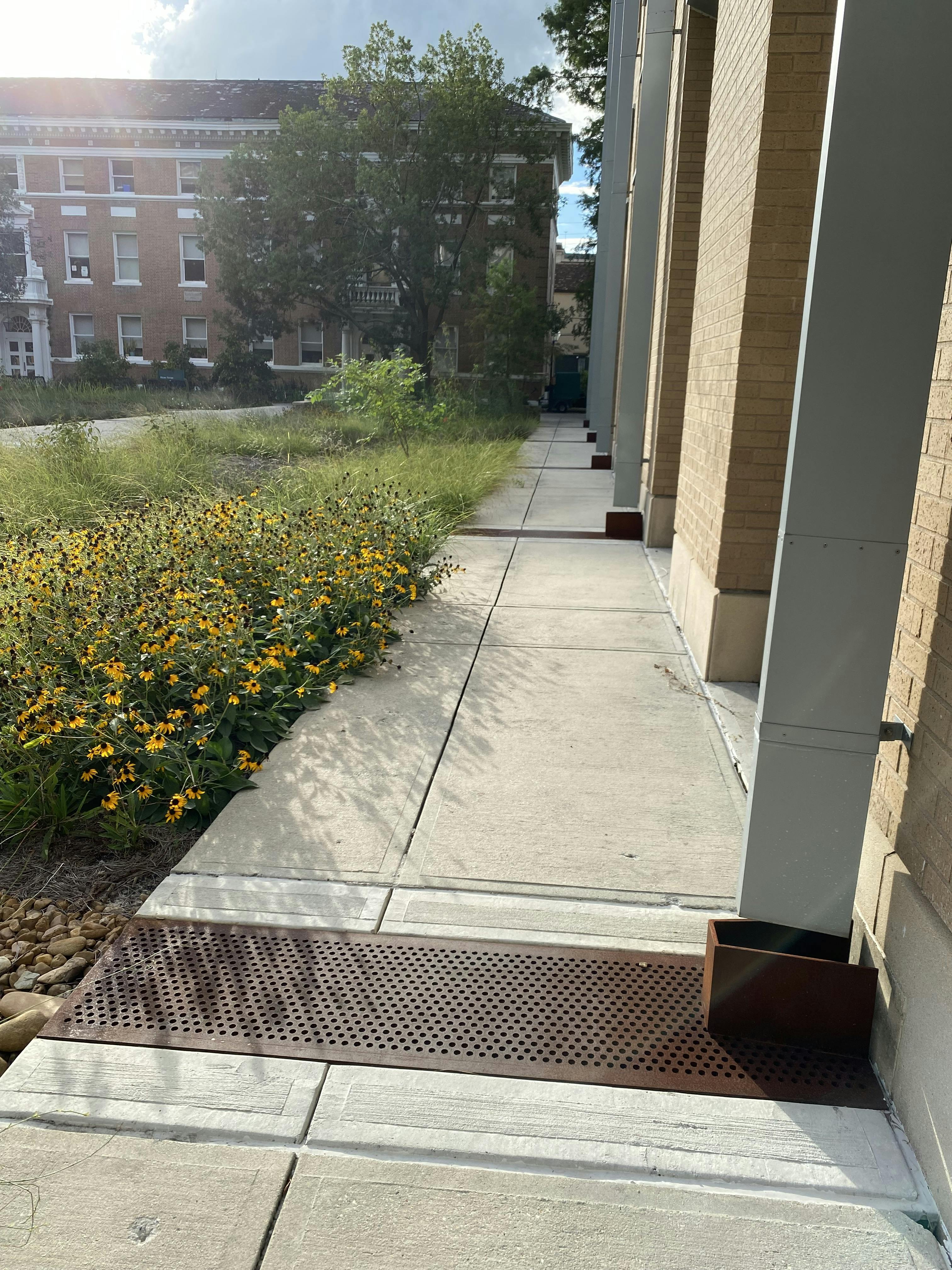
The downspouts of the Israel Environmental Sciences Building were retrofitted to direct stormwater into the biodetention basins on site
Over 10,000 cubic feet of stormwater are stored in the garden to reduce flooding, while also cleaning the water as it filters through the soil and roots of the plants.
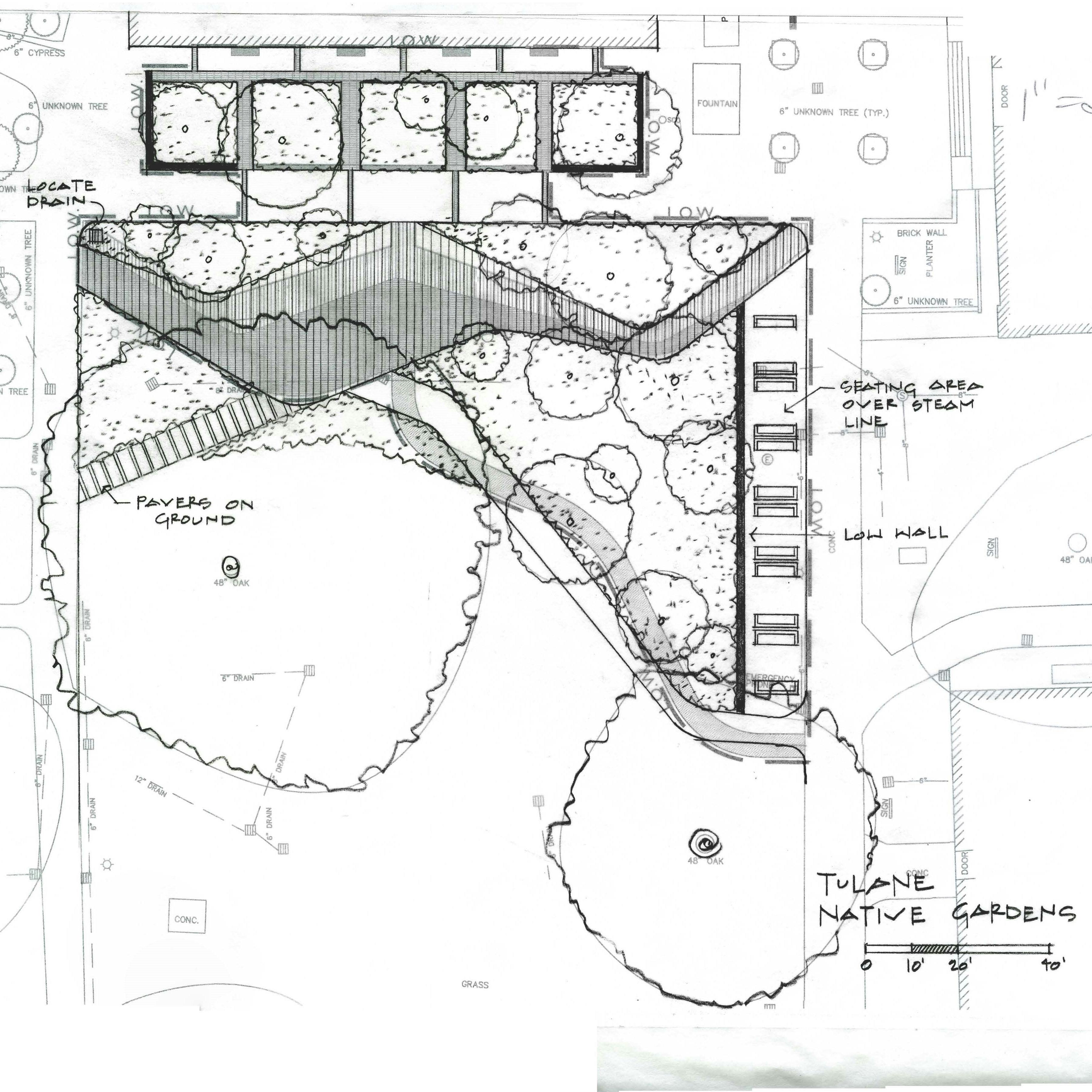
Original sketch of gardens and steel deck.
First and foremost, the project manages the stormwater on a significant portion of the Academic Quad of Tulane’s Uptown Campus. Over 10,000 cubic feet of stormwater are treated in the two interconnected biodetention basins on site. Water is captured from the surrounding site and buildings—the downspouts of the Israel Environmental Sciences building were retrofitted to direct stormwater into the system—and stored to prevent flooding, while also cleaning the water as it filters through the roots of the plants.
Beyond the stormwater management aspects of the project, the gardens are a showcase for native Gulf Coast plants that can handle the rigors of a wet/dry biodetention application. The project highlights a dynamic approach to planting where plantings are allowed to change seasonally and from year to year. The garden demonstrates the aesthetic potential of these dynamic landscapes for students, faculty, and administrators to evaluate as a potential approach to make the landscape on campus more ecologically rich.
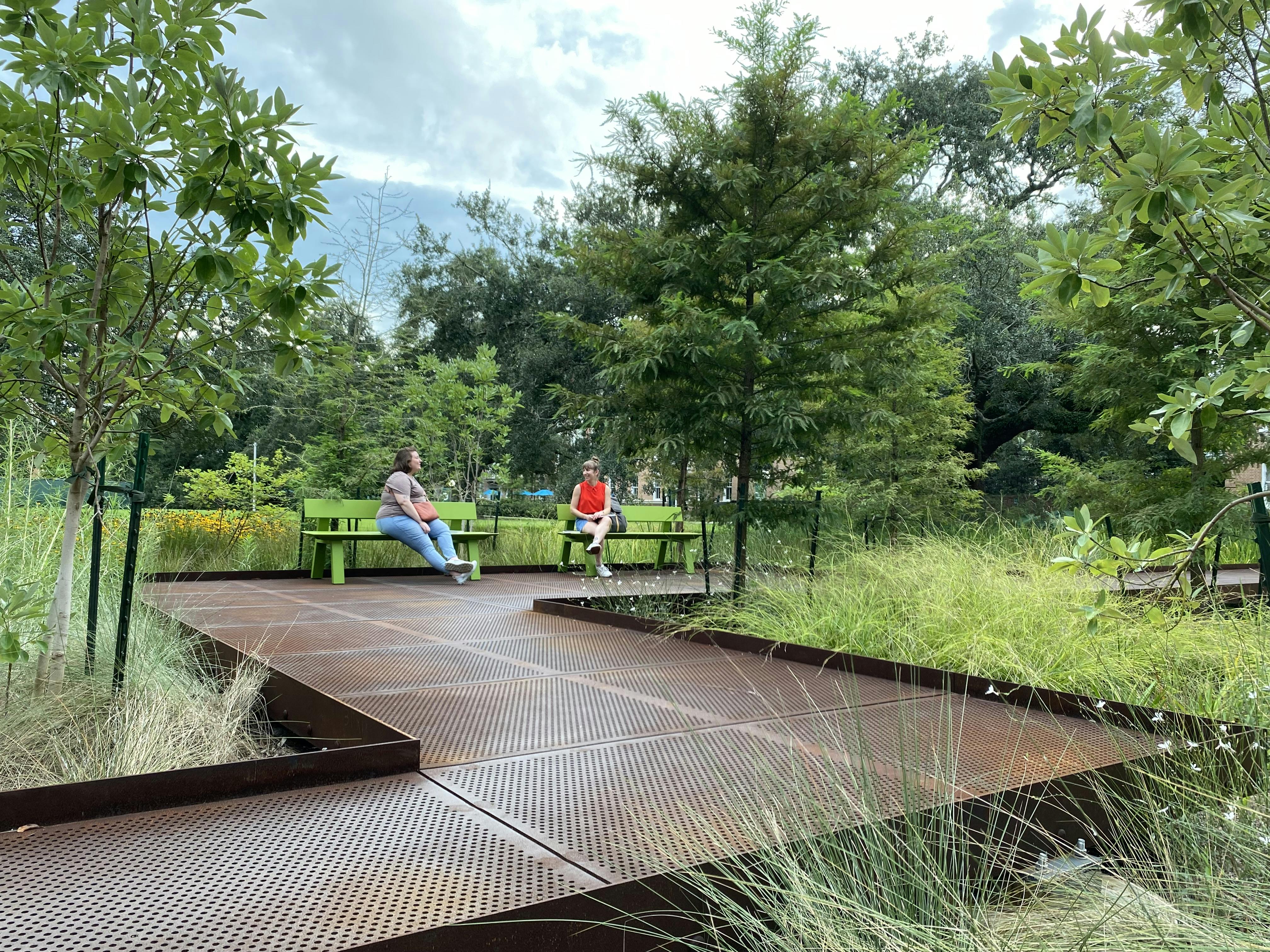
The gardens demonstrate the aesthetic potential to make the landscapes on campus more ecologically rich while still maintaining functionality for students, faculty, and staff.
This landscape supports the mission of the scientific community in the surrounding buildings on campus. The potential for students to use the garden as a laboratory for life sciences is built into the project. The elevated walk that transects the garden is a place for people to get closer to the plants and encourages interaction with the garden. The plants were chosen to emphasize pollinator plants that would attract insect life to the garden.

During installation of the rain garden, over twenty plant species native to the Southeast Louisiana region were incorporated throughout the site.
The garden walk also serves as a place for quiet study or outdoor teaching. Situated under a majestic Live Oak, the weathering steel platform provides an ideal microclimate for outdoor study and relaxation. Building the platform over the roots of a 100-year-old Live Oak required a flexible, sensitive approach to design and construction. On-site supervision of the construction process around the tree roots by the landscape architects allowed for in-the-field adjustments of pilings and foundations.
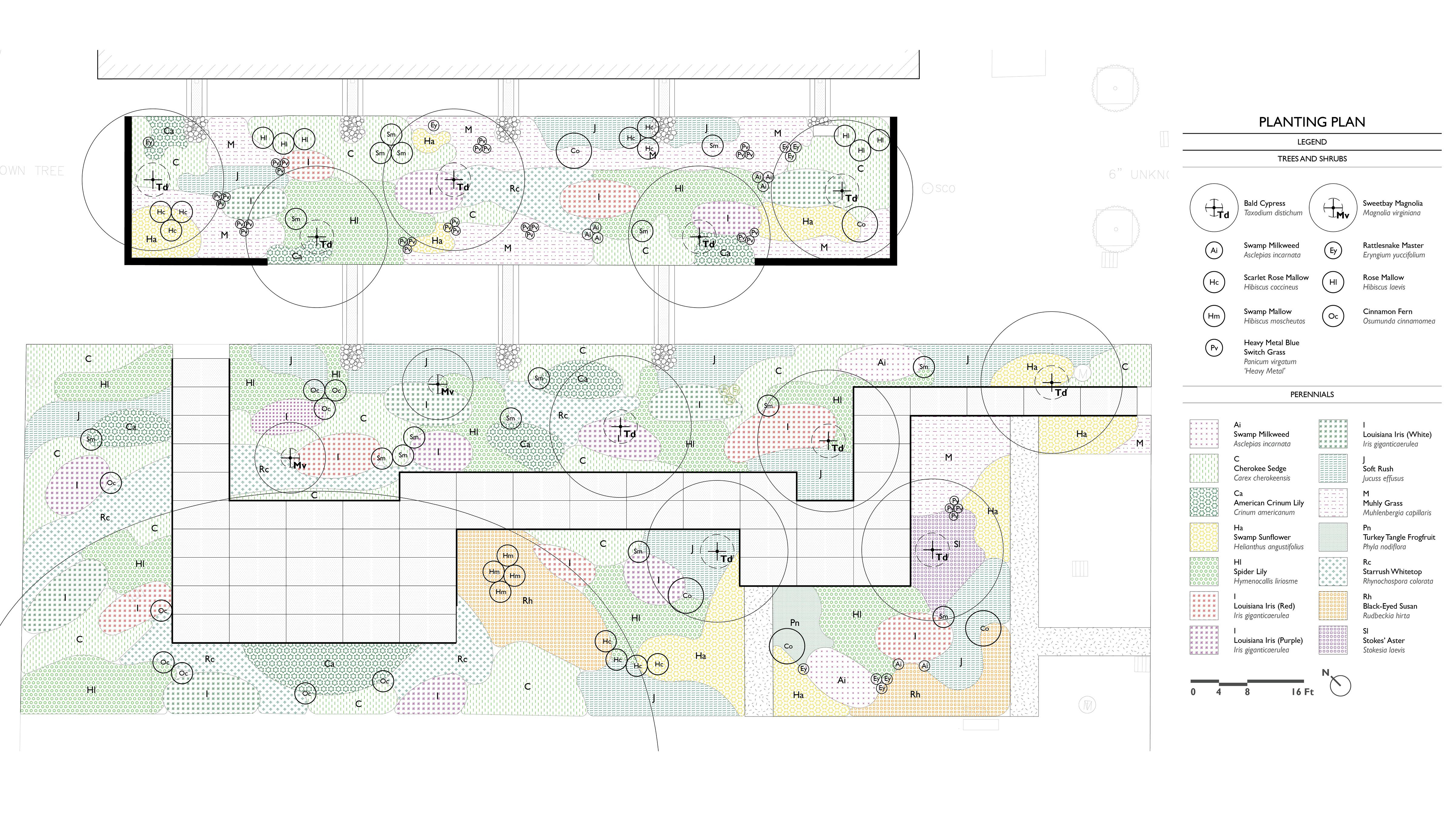
Native Gardens planting plan.
